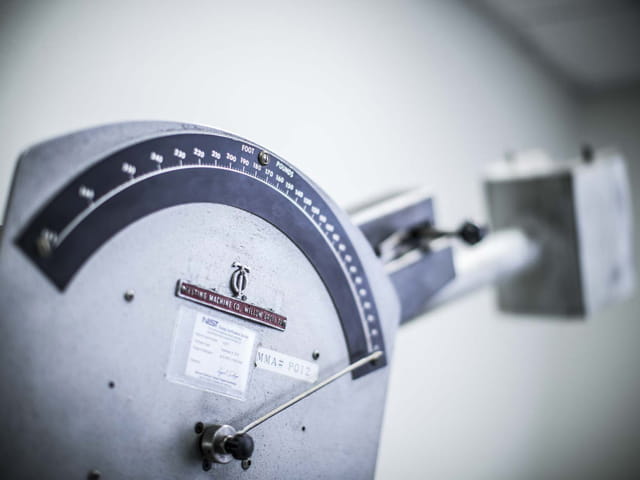Charpy vs Izod: An Impact Testing Comparison

By Engaged Expert
Lee ManghamLee Mangham is the Technical Manager at the Element Sheffield laboratory, he is responsible for a wide variety of technical content and has over 30 years of experience in mechanical testing.
Both Charpy and Izod impact testing are popular methods of determining the impact strength or toughness, of a material. These tests measure the total amount of energy that a material can absorb. This energy absorption is directly related to the brittleness of the material. Brittle materials, such as ceramics or glass, tend to have lower absorption rates than ductile materials like Stainless Steel or brass.
Recognizing the energy absorption properties of a material is crucial, as it provides insights into the extent of plastic deformation the material can endure before facing catastrophic failure. Additionally, gaining a comprehensive understanding of the shared characteristics and distinctions between these two prevalent impact test methods is essential before choosing the impact test method for your project.
What is Charpy Impact Testing?
The Charpy impact test was developed by S.B. Russell and Georges Charpy, at the turn of the 20th century. It remains, to this day, one of the most popular impact testing methods due to the relative ease of creating samples and obtaining results. The test apparatus consists of a weighted pendulum, which is dropped from a specified height to make contact with the specimen. The energy transferred to the material can be inferred by comparing the difference in the height of the pendulum before and after the fracture.
Charpy Impact Test Specimen Dimensions
A Charpy test specimen, which is placed horizontally into the machine, is typically a 55 x 10 x 10mm (2.165" x 0.394" x 0.394") bar with a notch machined into one of the faces. This notch, which can be either V-shaped or U-shaped, is placed facing away from the pendulum and helps to concentrate the stress and encourage fracture. The notch must be of specific dimensions and geometry to enable consistent results. Testing can be performed at both ambient and reduced temperatures, sometimes as low as -425F (254°C).
Charpy Test Standards: Charpy impact testing is typically carried out following standards like ASTM E23, ASTM A370, or ISO 148. Although the test is more commonly associated with metals, there are also specific standards tailored for plastics and polymers, such as ASTM D6110 and ISO 179.
“When choosing which type of test is right for the application of the material it is important to note that only the Charpy test can be performed at sub-ambient and elevated temperatures.”
Lee Mangham
Technical MANAGER
What is Izod Impact Testing?
The Izod impact test was named for English engineer Edwin Gilbert Izod, who first described the test method in 1903. The test apparatus and specimen design are very similar to Charpy impact, with some notable differences, including the shape and orientation of the specimen, which is clamped into the apparatus vertically with the notch facing toward the pendulum. The pendulum then impacts the sample at a specified area above the notch.
Izod Test Standards: Common Izod impact test methods include ASTM E23 & BS 131 for metals, and ISO 180 & ASTM D256 for plastics.
Izod vs Charpy Test Comparison
One of the main differences from Charpy impact is that Izod impact testing is performed in two orientations on the same sample whereas the Charpy test is performed in the same orientation. Plastic samples are typically a 64 x 12.7 x 3.2 mm bar with a machined V-shaped notch. Metallic samples are typically round 127 x 11.43 mm bar with 1 or 3 machined V-shaped notch(es).
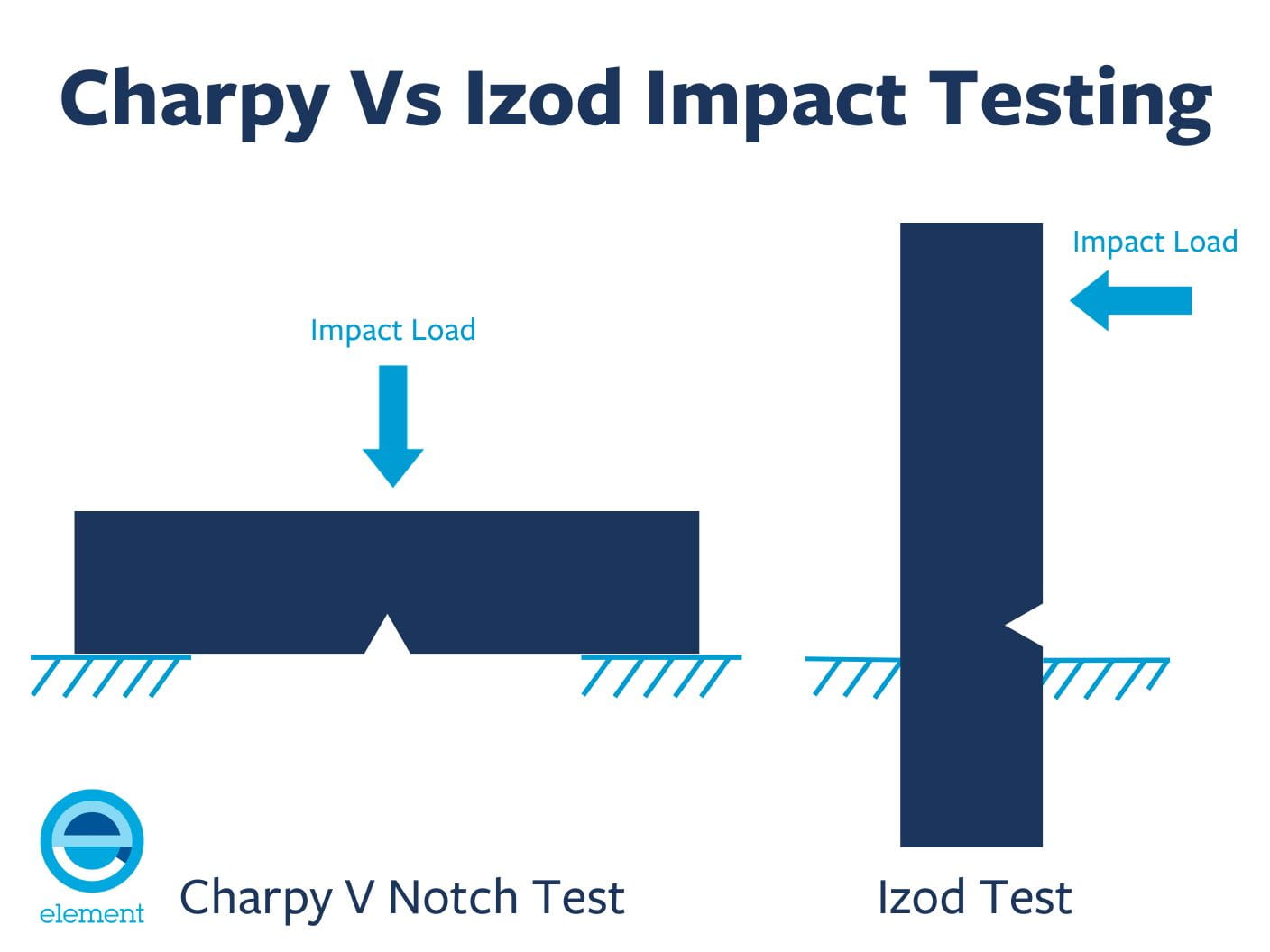
I have metallic samples. Which method should I perform?
If you opt for Izod impact testing, selecting the right specimen configuration is the next step. Options range from round to square specimens and single-notched to three-notched ones.
Opting for the 3-notch specimen can be more cost-effective, as it requires less material to obtain three impact results. Additionally, the 3-notch sample offers the advantage of averaging results from different directions, potentially minimizing bias from directional properties—an essential consideration for your material. Your choice of specimen configuration can play a key role in achieving accurate and unbiased results for your impact testing.
What Are the Differences Between Charpy and Izod Impact Testing?
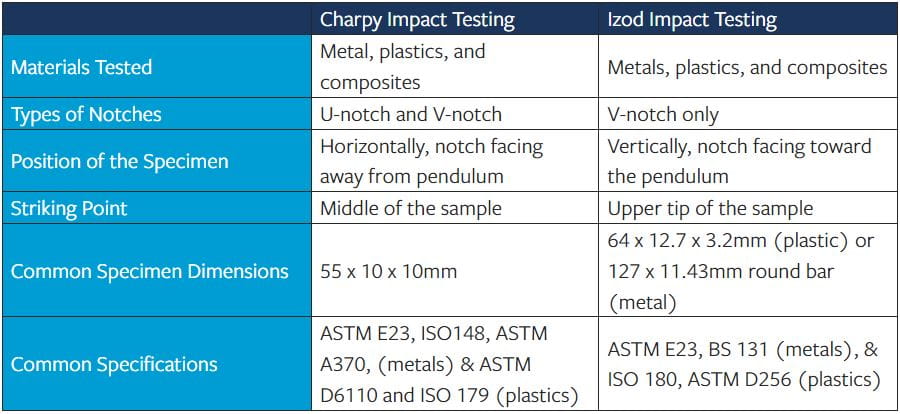
Note: When Izod specimens are to be machined to ASTM E23 the sample will be a single notch specimen for round samples with the following dimensions: 11.4mm diameter x 75mm. If a square sample is preferred the following dimensions will be adhered to: 131 x 10 x 10mm.
Selecting Charpy or Izod Impact Testing
Choosing between the Izod and Charpy methods involves considering their similarities and differences in specimen design and testing configurations. It's crucial to make this decision thoughtfully. Your testing provider can guide you, aligning the method with your specific material and end goals. Typically, the material specification will indicate the required test type to ensure it meets the necessary standards.
For more information about our global impact testing services or to request a quote, contact us today.
Find out more about Element and our credentials within the testing, inspection, and certification industry.
Find related Resources
More from Element
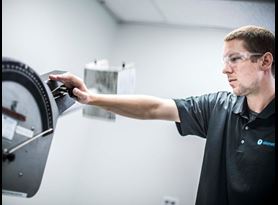
Charpy Impact Free Download
Read Element's free article on charpy impact and its uses in both research and development (R&D) and quality control (QC).
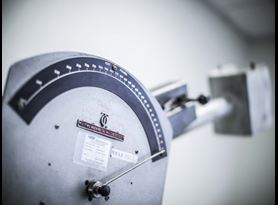
Charpy Impact Testing Services
Find out about the complete range of Charpy impact testing services that area available from Elements worldwide network of accredited laboratories.
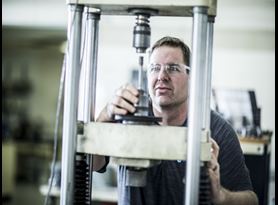
What is destructive testing?
Learn about the different methods used for destructive testing, such as tension, torsion, compression, tensile, hardness, creep, stress rupture testing, etc.

Non-Metallic Impact Strength Testing Services
In addition to Charpy testing, we provide specialized impact test methods for non-metallic materials, including Izod impact testing and Gardner impact testing.
